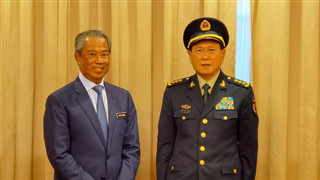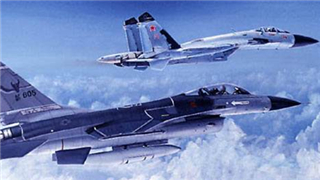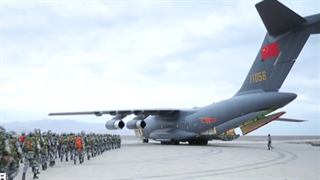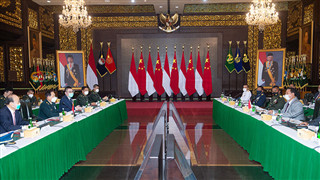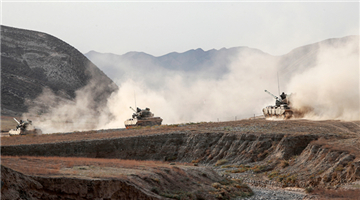
By Liang Jun and Sun Wenjing
The US has given India a lot of support recently for geopolitical reasons and has been pressing it to sign the Basic Exchange and Cooperation Agreement (BECA) as soon as possible.
The BECA, along with the General Security of Military Information Agreement (GSOMIA), the Communications Compatibility and Security Agreement (COMCASA), and the Logistics Exchange Memorandum of Agreement (LEMOA), is considered by American and Indian militaries as the cornerstones of all their major military cooperation. These agreements have jointly defined the general standards and systems for the two militaries, provided the legal basis for their interoperability, and set the guidance on America’s export of cutting-edge weapon technologies to India.
In the Pentagon’s development of the military relationship with all allies and partners in the past few decades, signing the four agreements is a routine protocol that’s called the “conventional tool for building military cooperation”. Over recent years, the US has alternately extended the olive branch and wielded the stick to force India to sign the four agreements as soon as possible, but India, the self-proclaimed leader of the Non-Aligned Movement, hasn’t given a definite answer yet with a mind to gain itself more interests by dancing between the major countries. After Modi's Bharatiya Janata Party (BJP) came in power in 2014, the country has been taking big strides in seeking military cooperation with Washington. Due to recent border clashes, the Indian Defense Ministry announced that it is speeding up the negotiations with America’s National Geospatial-Intelligence Agency (NGA) in the attempt to sign the agreement before the US presidential election in November this year.
On the surface, Washington and New Delhi are having close military cooperation, but it’s in fact nothing more than sheer business in which both sides are just using each other to grind their own ax.
Actually Washington has already made a fortune out of New Delhi. As is known to all, India is a major arms purchaser, but its consistent weapon purchase from Russia has got under America’s skin. Yet as the US-India agreements are signed one by one, India has purchased more weapons and equipment from the US, driving bilateral arms trade volume to increase at a geometric rate. According to statistics from the Stockholm International Peace Research Institute (SIPRI), America’s arms sales to India soared by 569% in 2013-2018, becoming the latter’s second-largest weapon provider at one time, and its cumulative arms sales to the country have amounted to USD20 billion so far.
Unlike the US that aims at military and economic interests, India has spent so much money on signing the agreements in order to fulfill its major country ambition. On the one hand, New Delhi wishes to check its neighbors by having Washington on its side, to offset the influence of other major countries and cement its position as the South Asian leader. On the other hand, it hopes to obtain American weapons and relevant technologies more conveniently to enhance its military strength and evolve into a military power as well. After all, it was because of the signing of COMCASA that India has obtained the authentic Sea Guardian long-distance drone from the US, not the version with navigation, missile guidance and foe/friend identification systems dismantled. The signing of BECA would enable India to use American positioning data to increase the combat accuracy of its cruise missiles, ballistic missiles, and UAVs.
Since the US-India military cooperation is basically a business deal, they would definitely calculate who has more to gain or lose. In comparison, Washington benefits more from the cooperation while New Delhi is more passive and pays a higher price.
Economic interests aside, the US and India don’t gain equal military interests from the agreements. For instance, LEMOA allows both countries to share their logistics bases, but it’s mostly American military vessels and aircraft visiting Indian port bases, which compensates for the fact that the US military has only one military base, namely the Diego Garcia, in the Indian Ocean and enhances its force projection capability in the region.
Although the agreements give India access to advanced American weapons, that’s “more loss than gain” in that they “erode” Indian sovereignty and core secrets. COMCASA, for instance, forces India to open its most sensitive government and military communication networks to the US, including the Strategic Forces Command (SFC) responsible for the deployment of nuclear weapons. If BECA is signed, the US military will be likely to have access to the strategic geo-information from the Indian military, whose ongoing technological systems might even be aborted.
To keep the advanced weapons it sold to India from falling in a third party’s hands, Washington also signed the End User Monitoring Agreement (EUMA) with New Delhi that puts rigorous restrictions and rules on how India should use and process the equipment and technologies it has purchased. According to EUMA, American inspectors can conduct random examination and counting of the sold equipment to decide if India has used them for pre-described purposes or imitated them in any way. Once India violates any rule, Washington would be so harsh as to cut off the logistics supply and reduce the equipment into a heap of scrap iron.
To keep India dependent on American weapons, EUMA also prevents it from buying such equipment from other providers without the US’ prior permission, not even America’s allies, leaving New Delhi no choice but to order even parts and components directly from the US.
Arms sale has become an important means for Washington to keep its grip on New Delhi, for which the all-round restrictions have made the cornerstone agreements much less appealing as they really bring few benefits to the country. What’s intriguing is that the more the Indian troops use weapons made in the US, the harder it is for them to cooperate with their traditional partner Russia, not to mention the hindrance on the development of theIndian military industry, undermining the material foundation for India’s strategic independence.
Disclaimer: This article is originally published on Xinmin News Net, one of the biggest mainstream news network based in Shanghai City. It is translated from Chinese into English and edited by the China Military Online. The information, ideas or opinions appearing in this article do not necessarily reflect the views of eng.chinamil.com.cn.
